Engaging Geometry Challenges to Sharpen Your Mind
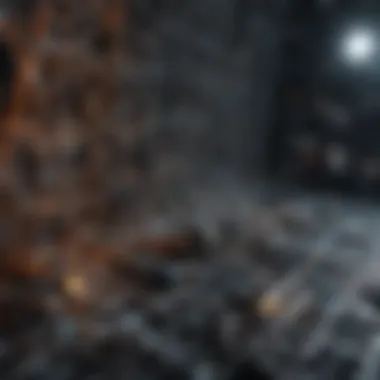
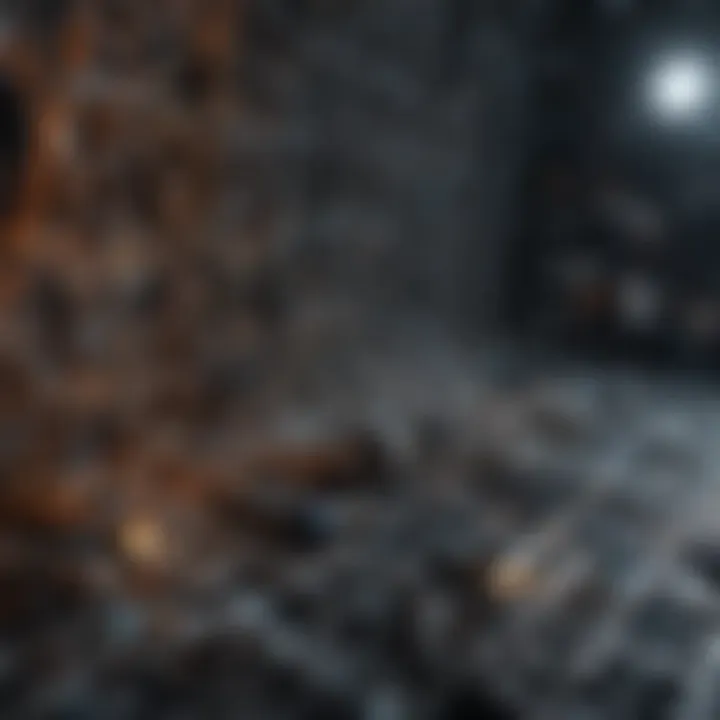
Intro
Geometry is more than shapes and angles; it’s a realm brimming with logic and creativity. As we navigate through life, we encounter various geometric scenarios that require a critical eye and a sharp mind. This article dives into the intricate yet fascinating world of geometry. Along the way, we will unravel engaging problems that challenge preconceived notions and highlight the beauty of geometric thinking.
In the coming sections, we will explore key research findings that shed light on recent discoveries that could transform how we approach geometric challenges. We will simplify complex concepts in geometry, making them accessible for all, including students, educators, and the curious mind. Let’s not forget the practical applications—geometry plays a pivotal role in everyday problems, whether in architecture, art, or even planning a simple event.
So, buckle up as we embark on this journey to enhance our understanding and appreciation of geometry, proving that with a bit of exploration, anyone can find joy and intrigue in the art of problem-solving.
Understanding Geometry
Geometry is much more than just a school subject; it serves as a foundational pillar in many areas of both academic study and everyday life. At its core, geometry helps us comprehend the shapes and spaces around us. Think about how crucial the understanding of angles and distances is when designing buildings or even setting up a piece of furniture in your living room. This spatial reasoning translates into practical skills that many professions rely on, from architecture to engineering.
By grasping geometric concepts, individuals can tackle complex problems creatively. This type of problem-solving is not limited to the realm of mathematics but also extends into art, science, and even technology. With geometry, one can visualize relationships and patterns that are often non-obvious. It encourages logical thought and lays the groundwork for deductive reasoning.
Defining Geometric Concepts
Geometric concepts can be tricky to pin down because they form the language of shapes, sizes, and relative positions of figures. Here are some fundamental concepts:
- Point: The simplest form, representing a location in space without dimensions.
- Line: A collection of points extending in two opposite directions.
- Plane: A flat surface extending indefinitely in two dimensions.
These basic definitions act as the building blocks for more complicated ideas. For instance, the relationships among points, lines, and planes lead to discussions about angles, triangles, and polygons—each carrying its unique properties and implications.
Understanding these definitions is essential for approaching problems effectively, as they often form the first step in problem-solving strategies that can take the solver deep into the world of geometry.
History of Geometry
The tale of geometry is as old as civilization itself. The Egyptians were among the first to apply geometric principles practically, using them for land surveying. Their knowledge dates back as far as 3000 B.C., focused predominantly on construction and agriculture. They employed geometry to calculate land areas and establish property lines, showing that even in ancient times, geometry had significant real-world implications.
The Greeks took it a step further. Figures like Euclid and Archimedes laid down axioms that still guide modern geometrical understanding. Euclid's Elements is often regarded as one of the most influential works in mathematics, systematically presenting geometric truths.
The evolution of geometry didn't stop there. The Renaissance brought forth a rebirth of interest that included multiple dimensions and perspectives, introducing concepts such as projective geometry. Non-Euclidean geometry emerged in the 19th century, challenging previously held assumptions and expanding the discipline into new territories.
"Understanding geometry is like unlocking a door to various paths of exploration; each principle opens up a new perspective on how we engage with the world, both practically and intellectually."
Today, as we explore fun geometry problems, we are merely building upon thousands of years of knowledge and practices. Each of these historical leaps has equipped us with a richer, more nuanced lens through which to view not just geometry but the world around us.
The Importance of Problem-Solving in Geometry
Problem-solving in geometry serves as the cornerstone for understanding not just mathematical concepts but also their applications in the real world. It is the engine that drives critical thinking, creativity, and logical reasoning, helping learners grasp various geometric principles. When students tackle geometry problems, they develop these vital skills, laying a solid foundation for tackling complex issues in other disciplines. Moreover, engaging with geometric challenges can instill confidence and independence in learners, breaking the chains that often bind them to rote memorization.
One of the key elements in understanding geometry is the ability to visualize shapes and comprehend spatial relationships. This visualization goes beyond mere drawings on paper. It demands a mental agility that allows students to manipulate figures and understand their properties dynamically. Thus, problem-solving becomes a vehicle for imagination and exploration, drawing connections between abstract geometric concepts and concrete applications.
Cognitive Benefits of Solving Geometry Problems
Delving into geometry problems provides numerous cognitive benefits that extend beyond math skills. Engaging with these puzzles sharpens analytical abilities and fosters a deep-seated understanding of spatial reasoning. For example, consider the scenario where students explore the properties of triangles. As they figure out different ways to calculate the area, they inherently practice problem decomposition and hypothesizing. This process nurtures flexibility in thinking—an essential trait both inside and outside of academic environments.
Moreover, research indicates that solving geometry problems enhances students’ ability to process and retain information. By grappling with challenging scenarios, students learn to connect new knowledge to what they already know, creating a rich, intertwined network of understanding. This deep cognition ultimately supports their academic performance, especially in STEM fields, where geometry plays a pivotal role.
Geometry Across Disciplines
Geometry is not confined to the walls of a mathematics classroom; its influence seeps into various fields, from physics to art, and even computer science. When students engage with geometry problems, they are not merely learning about shapes; they are discovering the thread that links various disciplines together. For instance, in physics, understanding geometric principles is essential for comprehending motion and energy. The concept of a trajectory, represented as a parabolic arc in physics, is a direct application of geometric understanding.
In the realm of art, geometry aids artists in creating perspective and proportion. Consider how artists like Leonardo da Vinci employed geometric principles to achieve balance and harmony in their works. Likewise, architects utilize geometry to craft innovative structures that are both functional and aesthetically pleasing. The interplay between geometry and building design illustrates how these principles provide solutions to real-life challenges.
To summarize, the significance of problem-solving in geometry extends far beyond the classroom. It serves as a crucial conduit for cognitive development, interdisciplinary connections, and encourages an innovative spirit that students can carry into their future endeavors. By immersing themselves in geometric challenges, learners not only enhance their mathematical skills but also gain a more profound appreciation for the interconnected world around them.
Classic Geometry Problems: Timeless Challenges
Classic geometry problems have stood the test of time, largely because they tap into foundational principles that govern the understanding of shapes and spatial relationships. These problems are pivotal not just for learning purposes but also for honing problem-solving skills that extend far beyond educational settings. At their core, these challenges encourage logical reasoning and mathematical thinking, two skills that remain invaluable, regardless of one’s profession or field of study.
The study of geometry through these classical problems provides students and enthusiasts a potent blend of historical context and contemporary relevance. By engaging with problems that mathematicians have been tackling for centuries, one gains a deeper appreciation for the subject and its evolution. Furthermore, classic geometry problems act as a bridge connecting the theoretical concepts to practical applications in various fields, such as architecture, engineering, and even art.
The Pythagorean Theorem in Action
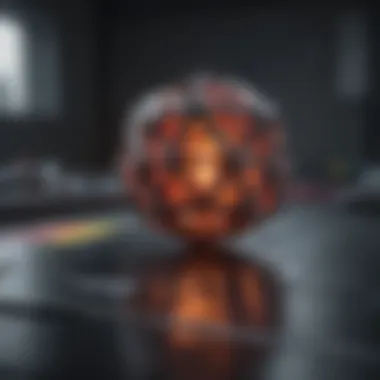
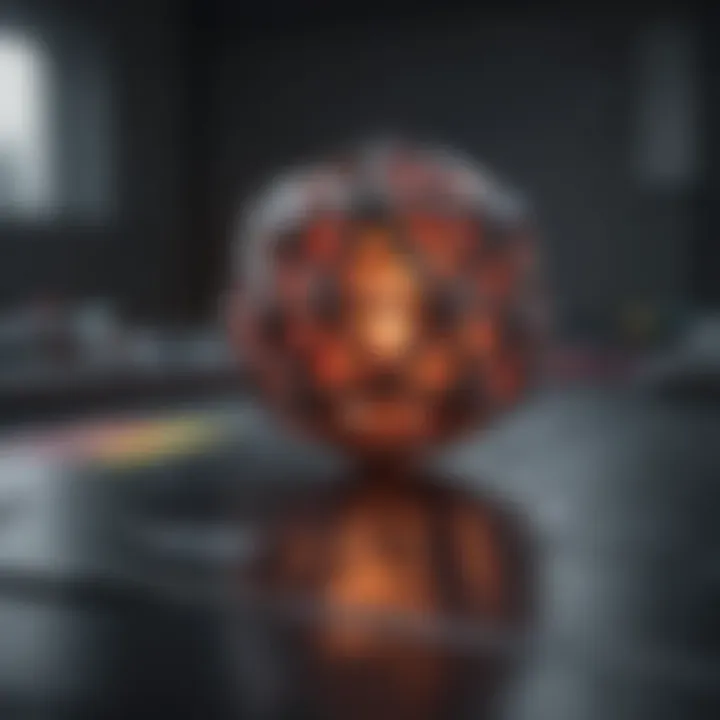
The Pythagorean Theorem is perhaps the most famous relationship in geometry, encapsulating the essence of right triangles. The formula, stated simply as a² + b² = c², where c represents the hypotenuse, serves as a groundwork for many geometric explorations. Understanding this theorem involves more than rote memorization; it's about recognizing the power of specific geometrical relationships and applying them to solve real-world problems.
To illustrate its practical use, consider a scenario wherein an architect needs to ensure a structure's right angles are true. By applying the Pythagorean Theorem, they can verify measurements without relying solely on tools like protractors. Suppose one side of a triangle measures 3 meters and another measures 4 meters; to find the hypotenuse, one simply calculates it as follows:
c = √(3² + 4²) = √(9 + 16) = √25 = 5 meters.
This relationship illustrates not just mathematical theory, but also hands-on applications in everyday life. Such comprehension fosters confidence in problem-solving abilities, whether in academic or practical environments.
Circle Problems and Their Applications
Circle problems encompass a diverse range of scenarios, from calculating area and circumference to exploring more complex ideas such as tangents and sectors. One fundamental question might be the challenge of finding the circumference of a circle when given its radius. The formula, C = 2πr, reveals how geometry allows us to determine essential metrics that have implications in fields like engineering and manufacturing.
Take, for example, the case of tire manufacturing. Engineers calculate the circumference of tires to ensure they meet specific rolling distance criteria. If a tire has a radius of 0.5 meters, the engineers would calculate:
- C = 2 × π × 0.5 = π meters
Understanding how to manipulate circular measurements opens the door to deeper inquiries into motion, ratio, and proportion that are prevalent in physics and engineering.
Circle problems also stretch into recreational math and design. Ever tried solving a puzzle where you need to position shapes within a circle without overlapping? These types of problems, while deceptively simple, can teach significant problem-solving skills, showcasing how geometry plays a role in more creative domains like art and design.
In summary, delving into classic geometry problems not only sharpens intellectual faculties but also bridges the gap between abstract theory and tangible application. For anyone wanting to master geometry, tackling timeless challenges like the Pythagorean Theorem and circle problems provides a pathway towards greater understanding and engagement.
Modern Geometry Problems: A Contemporary Approach
Modern geometry problems leverage the advancements in computational tools and concepts to enrich our understanding of space and shape. In today’s world, with the rise of technology, geometry is no longer confined to mere paper-and-pencil exercises—it has morphed into a dynamic field that touches various aspects of life, art, and science. This section explores the contemporary approaches to geometry problem-solving, illustrating how they serve not only as educational tools but also as sources of inspiration and creativity.
Dynamic Geometry Software: Enhancing Problem Solving
Dynamic Geometry Software, such as GeoGebra, has revolutionized the way students and educators engage with geometric concepts. This type of software allows users to construct geometric figures and manipulate them in real-time, offering an interactive platform for exploration and discovery.
- Visualization of Concepts: Students often struggle to grasp abstract concepts in geometry. Using software, they can visualize and manipulate shapes, transforming abstract problems into concrete experiences. For instance, by adjusting a slider, learners can see how the properties of a triangle change as its angles are modified.
- Experimentation: These tools encourage experimentation, allowing learners to test hypotheses and explore geometric relationships actively. By providing an environment where trial and error leads to insight, dynamic software fosters a deeper understanding.
- Collaboration: Additionally, with cloud features, students can collaborate on geometric projects, share findings, and solve problems together, reinforcing collective learning.
- Real-World Applications: Other solutions, like SketchUp, enable users to directly apply geometric principles in architecture and design, bridging the gap between theory and practice. It nurtures students' abilities to envision and create scaled models—essential skills in fields like engineering and architecture.
"Dynamic geometry tools cultivate a mindset geared toward problem-solving, creating a generation of thinkers ready to face complex challenges."
3D Geometry Challenges: Exploring Solid Shapes
With the advent of advanced technology, 3D geometry problems have emerged as a captivating area of study. They not only enhance spatial reasoning skills but also provide practical applications in various fields, from architecture to robotics. Here’s how 3D challenges contribute to a deeper grasp of geometric ideas:
- Development of Spatial Awareness: Solving 3D geometry problems requires an understanding of depth, volume, and surface area, which are essential in fields such as chemistry, where molecular geometry plays a key role.
- Practical Applications: Designers, engineers, and architects regularly confront 3D challenges. For instance, constructing a model for a new building involves understanding complex geometric shapes and their interrelationships.
- Visualization Techniques: Techniques such as stereolithography allow students to turn their 3D models into tangible objects, enhancing their understanding through tactile experiences. While solving these problems, learners encounter obstacles that necessitate innovative problem-solving strategies, helping them develop resilience.
To wrap it up, engaging with modern geometry problems through dynamic software and 3D challenges not only makes learning fun but also equips students with critical skills. By bridging theoretical knowledge with practical application, they inspire a generation of thinkers capable of navigating both the complexities of academic study and the challenges of the real world.
Issues and Conundrums in Geometry
Geometry is not just about shapes and angles; it connects profoundly with foundational ideologies that underpin mathematics overall. The unexplored territories, or rather the conundrums of this field, challenge our mind quizzically. They throw us into realms where intuition collides with abstract reasoning. Discussing issues in geometry is essential for expanding critical thought to new levels. When one engages with these difficult questions, the benefits extend beyond academic theory; they affect our understanding of the world we navigate every day.
Exploring these puzzling scenarios enables us to dismantle established perceptions, unraveling intricacies that lie hidden beneath the surface. Grasping these concepts instills an appreciation for mathematical elegance while sharpening our problem-solving skills, which serve well in diverse disciplines from physics to computer science.
Throughout this section, we will delve into the nuances of the Banach-Tarski Paradox and the intriguing domain of non-Euclidean geometry, both potent paradigms that compel us to re-evaluate our traditional ideas about space and dimensions.
The Banach-Tarski Paradox
The Banach-Tarski Paradox operates in the fascinating realm of set theory. It proposes that it’s theoretically possible to take a solid ball, dissect it into a finite number of non-overlapping pieces, and then reassemble these parts into two identical copies of the original ball. Yes, you read that right—two! This thought experiment challenges our grasp of volume and intuition.
What makes this paradox so compelling is its foundation in mathematical abstraction rather than physical reality. The pieces involved are not standard geometric shapes; instead, they consist of complex sets that can’t be neatly visualized in standard Euclidean space. As the layers unfold, one realizes that traditional geometry may not apply as we typically understand it. This paradox presents a mind-bending scenario that raises essential questions:
- Could such a process be practically realized, or is it merely an intellectual curiosity?
- What implications does this hold for the nature of infinity and volume?
Discussions on this paradox push the boundaries of deductive reasoning, encouraging students and enthusiasts alike to ponder the essence of fundamental mathematical principles.
Non-Euclidean Geometry: Rethinking Space
When one ventures into non-Euclidean geometry, the familiar laws of line and angle go right out the window. This field breaks the mold established by classical Euclidean principles, offering a fresh lens through which to examine shapes and their properties. Non-Euclidean geometry arises when the parallel postulate, a cornerstone of Euclidean theory, is altered or entirely abandoned.
Take spherical geometry, for instance; on a globe, lines—what we would call "great circles"—curved instead of straight, offering no room for parallel lines, as any two will inevitably intersect. Conversely, hyperbolic geometry introduces a scenario where, through a single point, you can draw countless lines without them meeting. Remarkably, non-Euclidean geometries have found their way into practical realms, influencing fields such as physics, particularly in the context of relativity.
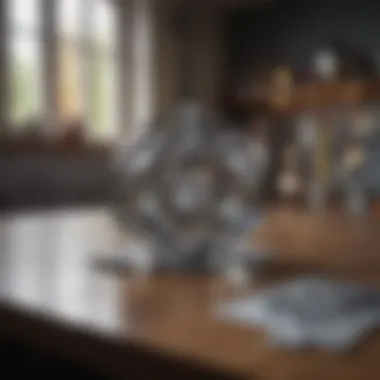
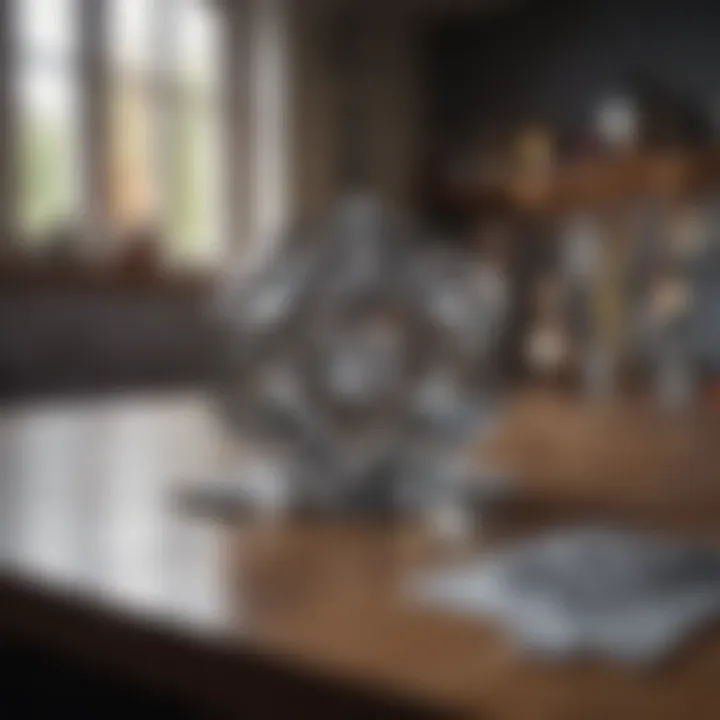
This leads us to important discussions:
- How does non-Euclidean geometry change our understanding of concepts such as distance and curvature?
- In what ways does it reflect or contribute to the models we have for our universe?
Rethinking space through this lens reveals the richness of mathematical exploration. By stepping outside traditional confines, students and researchers cultivate adaptable thinking skills, vital for tackling abstract concepts encountered in advanced studies.
Understanding and engaging with such issues and conundrums in geometry is not merely an intellectual exercise but a journey toward mastering critical analytic skills that transcend boundaries.
Geometric Proofs: The Backbone of Understanding
When diving into the world of geometry, one can’t overlook the pivotal role that geometric proofs play. These proofs are not just tools for validation; they serve as crucial pathways for understanding and exploring geometric concepts in depth. They bridge the gap between mere observation and rigorous logical reasoning. By dissecting and analyzing geometric relationships, proofs foster a critical mindset, encouraging learners to engage actively with the subject rather than passively memorizing formulas.
The importance of proofs transcends the boundaries of mathematics; they cultivate skills essential in various domains. The ability to construct a logical argument is invaluable, whether one is navigating personal decisions, business strategies, or even technological innovations. For students, comprehending how to write and comprehend proofs can transform their approach to problem-solving, allowing them to tackle challenges with a structured mindset.
Proofs are the backbone of mathematical reasoning, and in geometry, they are the compass guiding us through complex situations, ensuring we don’t get lost in abstract ideas without a solid foundation.
Types of Geometric Proofs
In geometry, various types of proofs exist, each suitable for different scenarios and purposes. Understanding these types aids learners in selecting the appropriate approach when confronted with geometrical challenges. Here are some common types:
- Direct Proof: This straightforward method involves assuming the premises are true and logically deriving the conclusion directly from them. It’s akin to following a recipe step by step without deviation.
- Indirect Proof: Also known as proof by contradiction, this involves assuming the opposite of what you’re trying to prove. When this assumption leads to a contradiction, the original statement must be true. It’s like playing devil's advocate before arriving at the truth.
- Construction Proofs: These proofs rely on constructing a specific configuration to demonstrate a geometric relationship. By physically creating shapes or using diagrams, learners can visualize and understand proofs better.
- Coordinate Proofs: Using algebra and the Cartesian plane, these proofs leverage coordinates to establish relationships among points, lines, and shapes. This approach often appeals to those who find comfort in numbers.
Each of these types has its place, occasionally overlapping, yet each offers unique insights into geometric reasoning.
Classic Proof Techniques
Exploring classic proof techniques reveals a wealth of methods that have stood the test of time. These techniques form the bedrock of many geometric proofs and their applications.
- Axiomatic Method: This foundational approach uses axioms or postulates as starting points. From these, one can derive various theorems. The elegance lies in its simplicity; it’s all about building on established truths.
- Syllogism: In this logical reasoning form, conclusions are drawn from two premises. If both are true, then the conclusion must be as well. This technique trains the mind to think critically about relationships between statements.
- Proof by Cases: This method considers different possible scenarios that might affect the proof. By addressing all potential cases, one ensures that no possibility is left unexamined, leading to a comprehensive understanding of the geometric problem.
- Visual Proofs: Sometimes, a picture is worth a thousand words. Visual proofs utilize diagrams and illustrations to establish truths. This approach is particularly valuable in geometry, where visualizing shapes and their properties can enhance comprehension.
Mastering these proof techniques equips learners with valuable tools that can be applied to solve not just geometric problems but a wide range of challenges across disciplines.
Interactive Geometry Problems: Engaging with the Subject
Interactive geometry problems are more than just exercises; they are gateways to deeper understanding and appreciation of geometric principles. Engaging with these problems encourages a hands-on approach, fostering critical thinking and enhancing problem-solving skills. The process of navigating through interactive challenges not only illuminates the intricacies of geometric concepts but also makes learning more enjoyable and relatable.
One of the distinct advantages of interactive problems lies in their ability to stimulate active participation. Instead of passively absorbing information, learners find themselves immersed in dynamic environments where they can visualize and manipulate geometric shapes. This sensory engagement helps solidify abstract concepts into tangible understanding. Students often find it easier to grasp relationships and properties when they can see and change them in real time.
Moreover, interactive geometry allows for exploration and experimentation. Consider the appeal of tools like GeoGebra or Desmos, which enable users to create and modify geometric figures. When students adjust angles, drag points, or toggle measurements, they encounter firsthand the effects of their changes. This iterative process leads to deeper insights. It's in these interactive moments that learners often stumble upon unexpected patterns or relationships, prompting their curiosity and further exploration.
In practical settings, these problems are invaluable. For educators, incorporating interactive geometry problems into lesson plans creates opportunities for collaborative learning. Students can work in small groups, navigating challenges together and sharing discoveries. This cooperative approach not only enriches individual understanding but also builds teamwork skills—essential in any field.
Exploring Geometry Through Puzzles
Geometry puzzles offer delightful conundrums that encourage both critical thinking and creativity. They invite learners to approach geometry from an angle of enjoyment rather than mere memorization. These puzzles can range from classic tangrams to complex geometric dissections that require a keen eye and strategic thought.
*Common puzzles encourage:
- Logical reasoning—students must deduce the next step from what they know.
- Spatial visualization—puzzles often involve imagining shapes in different orientations.
- Collaboration—many puzzles are suitable for group work, showcasing the benefits of varied perspectives.*
For instance, the famous "Seven Bridges of Königsberg" problem challenges individuals to determine whether it is possible to cross each bridge only once. Engaging with such problems hones the ability to think critically about routes and paths, applying geometric principles in practical contexts.
Geometry in Board Games and Strategy
Board games and strategy challenges often integrate geometric thinking in ways that may surprise players. Many popular games, such as chess or even Settlers of Catan, involve spatial reasoning and strategic placement—key components of geometry. Think about how the positioning of pieces can affect potential moves and outcomes. This awareness parallels geometric concepts such as symmetry, area, and distance, making the learning process seamless and engaging.
Strategies within these games can also shed light on geometric properties. For example, decoding the tessellation patterns in Tetris not only requires recognizing forms but also understanding how those forms interact with one another.
Thus, integrating geometry into traditional board games makes the subject more accessible and enjoyable. Players must not only think ahead but also visualize how different shapes and strategies impact their gameplay. This form of applied learning can bridge gaps between theoretical concepts and real-world applications, stimulating interest in the discipline.
By embracing interactive elements, whether through puzzles or board games, we dismantle barriers to understanding geometry.
Whether in an academic setting or at home with friends, the versatility and engagement of interactive geometry problems offer fresh perspectives—showcasing the subject's relevance and encouraging continued exploration.
Real-World Applications of Geometry Problems
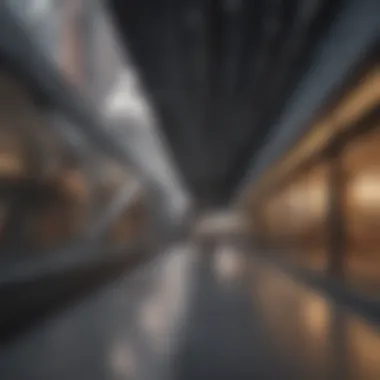

Geometry is not just a subject confined to textbooks or theoretical exercises; it plays a vital role in our everyday lives and various industries. Understanding how geometry applies in real-world scenarios allows students and professionals alike to grasp the significance of the principles they've learned. By emphasizing the practical applications of geometry problems, we can appreciate how these concepts are woven into the fabric of the world around us.
One of the core benefits of studying geometry is the enhancement of spatial reasoning skills, which are crucial in personal and professional contexts. From creating accurate blueprints in architecture to interpreting intricate designs in art, geometrical principles are foundational to success in many fields. Here, we will delve into specific areas where geometry is more than just an academic exercise.
Architecture and Construction
In architecture, geometry serves as the backbone of creativity and efficiency. Architects often use geometric shapes to form structures that are not only aesthetically pleasing but also stable and functional. For instance, the use of triangles in truss designs enhances the strength of bridges and roofs, distributing weight effectively. Moreover, in urban planning, geometric principles help in the layout of roads, parks, and public spaces, ensuring that they serve the community well.
Here are some specific applications of geometry in architecture and construction:
- Structural Integrity: Utilizing shapes like arches and domes, which can bear weight effectively.
- Space Optimization: Understanding volume and area allows for maximizing space in buildings while meeting regulatory requirements.
- Design and Proportion: Concepts like the Golden Ratio are often applied to create visually appealing designs.
These applications illustrate that a solid grasp of geometry informs better decisions, leading to innovative solutions in architecture and construction. The intertwining of creativity and practicality exemplifies the necessity of geometric knowledge in producing functional designs that endure.
Art and Design: The Geometry Connection
The link between geometry and art is profound. Artists throughout history have employed geometric principles to create balance, harmony, and movement in their works. From the vibrant paintings of Piet Mondrian, characterized by grid lines and rectangular forms, to the flowing curves of Antoni Gaudí's architecture, geometry shapes the visual experience.
Consider how geometry enhances artistic expression:
- Symmetry and Asymmetry: Artists use these concepts to create pleasing compositions or to convey emotions, often leading the viewer's eye through the artwork.
- Perspective: Knowledge of lines and angles allows artists to create depth, making two-dimensional works appear three-dimensional.
- Pattern and Texture: Geometry permeates the designs found in textiles and crafts, showcasing the aesthetic potential of geometric forms.
Without geometry, art would not exist in its most compelling forms. The beauty of many pieces is derived from the underlying mathematical structures.
In summary, geometry transcends its mathematical roots and burgeons in the realms of architecture and art, revealing the interconnectedness of disciplines. By studying real-world applications, we can deepen our appreciation for geometric principles and inspire innovative thinking that enriches countless fields.
Teaching Strategies for Geometry
Teaching geometry effectively goes beyond simply explaining formulas and theorems. It involves creating an engaging environment that recognizes diverse learning styles and fosters critical thinking skills. The topic is particularly crucial within the broader context of this article, as innovative teaching strategies can significantly enhance a student's ability to tackle geometry problems. This not only improves their competency in the subject but also builds a foundation for problem-solving skills applicable in everyday life.
The integration of fun, interactive geometry problems in the classroom can ignite a passion for mathematics among students. When they encounter challenges that provoke curiosity, it feels less like work and more like discovery. By using geometry as a lens to understand real-world situations, educators can show students the relevance and application of what they are learning.
Incorporating Fun Geometry Problems in the Classroom
Incorporating fun geometry problems in the classroom can make learning more vibrant and effective. Here are some strategies:
- Hands-On Activities: Engaging students with physical materials like geometric solids allows for tactile learning. Building models or manipulating objects in space can turn abstract concepts into tangible experiences.
- Collaborative Learning: Encourage students to work in pairs or small groups on geometry puzzles. This not only makes the learning experience more social, but it also helps develop communication skills as they explain their reasoning to peers.
- Real-Life Applications: Present students with problems that connect geometry to their daily lives. Whether it’s calculating the area needed for a garden or understanding the angles involved in sports, relating concepts to real situations can lead to better retention.
- Gamification: Utilize games that incorporate geometric concepts. By turning learning into a game, students may feel more motivated to tackle challenges that seem intimidating at first.
- Visual Aids: Use diagrams, animations, or videos to clarify complex concepts. Visualization can bridge gaps in understanding and cater to visual learners.
In essence, the idea is to create an atmosphere where geometry isn't merely a subject confined to textbooks, but an exciting world waiting to be explored.
Using Technology in Geometry Education
The rise of technology has opened new avenues for teaching geometry. The application of tech tools can enhance conceptual understanding and problem-solving abilities. Here are notable uses of technology in geometry education:
- Dynamic Geometry Software: Programs like GeoGebra allow students to explore geometric constructions dynamically. Such platforms enable them to manipulate shapes and see the consequences of changes in real-time, deepening their insight into geometric relationships.
- Online Simulations: Interactive online resources can invite students to engage with geometry problems in various contexts. These simulations can present problems that adapt based on student responses, ensuring personalized learning experiences.
- Virtual Reality: Imagine stepping into a virtual world where students can interact with 3D shapes and concepts. This immersive experience can radically shift how they grasp geometric concepts and engage with difficult ideas.
- Assessment Tools: Technology can streamline formative and summative assessments. Platforms like Google Forms or Kahoot! can be used to create quizzes that provide instant feedback to students, showing them exactly where they need to focus their efforts.
Ultimately, incorporating technology requires thoughtful planning, but when implemented correctly, it holds the promise of transforming geometry education from static to dynamic, empowering students to take ownership of their learning journey.
"The greatest innovations in teaching come from understanding not just what works, but also why it works."
This blend of hands-on challenges and technology ensures that teaching geometry can be both rigorous and enjoyable, paving the way for a new generation of geometrically-savvy minds.
Future Trends in Geometry Studies
As we cast our eyes forward into the world of geometry, it's clear that this field is not just stagnating in the annals of academia. Rather, geometry is evolving, paving new paths that promise enhancement to both theoretical exploration and practical application. From emerging technologies to interdisciplinary connections, these trends are not mere trends but movement towards a more integrated understanding of the geometric world.
Emerging Technologies in Geometric Research
In today’s world, technology and geometry are entwined like vines in a garden. The advent of dynamic geometry software has transformed how we approach geometric problems. Programs like GeoGebra allow users to explore geometric concepts interactively, turning abstract ideas into tangible experiences. The visual nature of these tools helps in grasping complexities that traditional methods may struggle to convey.
Moreover, advancements like 3D printing are enabling geometrical innovations that were once confined to theory. By crafting physical models of complex shapes, researchers gain insights that are both fascinating and practical. What’s more, augmented and virtual reality are pushing boundaries, making it possible to visualize multidimensional problems in immersive environments. This kind of technology isn't just for the tech-savvy; it creates bridges for students and professionals alike, fostering an engaging learning atmosphere.
"The future of geometry lies in its ability to adapt and integrate with new technologies, fundamentally changing how problems are solved and understood."
The Role of Geometry in Interdisciplinary Studies
Geometry is not just about angles and shapes; it seeps into various disciplines, creating a rich tapestry of interconnected studies. For instance, in the realm of data visualization, geometry plays a vital role in representing complex datasets in an approachable way. The shapes, sizes, and placements of graphical elements can alter how we perceive information, and hence effective geometric understanding is crucial.
Another prominent area is architecture, where geometry shapes our environments. Concepts such as symmetry, proportion, and tessellation not only enhance aesthetic appeal but also ensure structural integrity. The interplay of geometry and artistry in design speaks to the heart of many projects, from buildings to product designs.
Additionally, educational frameworks are beginning to reflect this interdisciplinary connection. For instance, teaching geometry alongside concepts from physics or biology provides students a practical context, allowing for deeper understanding. The marriage between geometry and fields like computer science, engineering, and even social sciences encourages innovative solutions to real-world problems.















